
The Sun’s Internal Structure and Atmosphere, Solar Wind
Subscribe to Never Miss an Important Update! Assured Discounts on New Products!
Must Join PMF IAS Telegram Channel & PMF IAS History Telegram Channel
Last updated on May 8, 2024 10:06 AM
The Sun
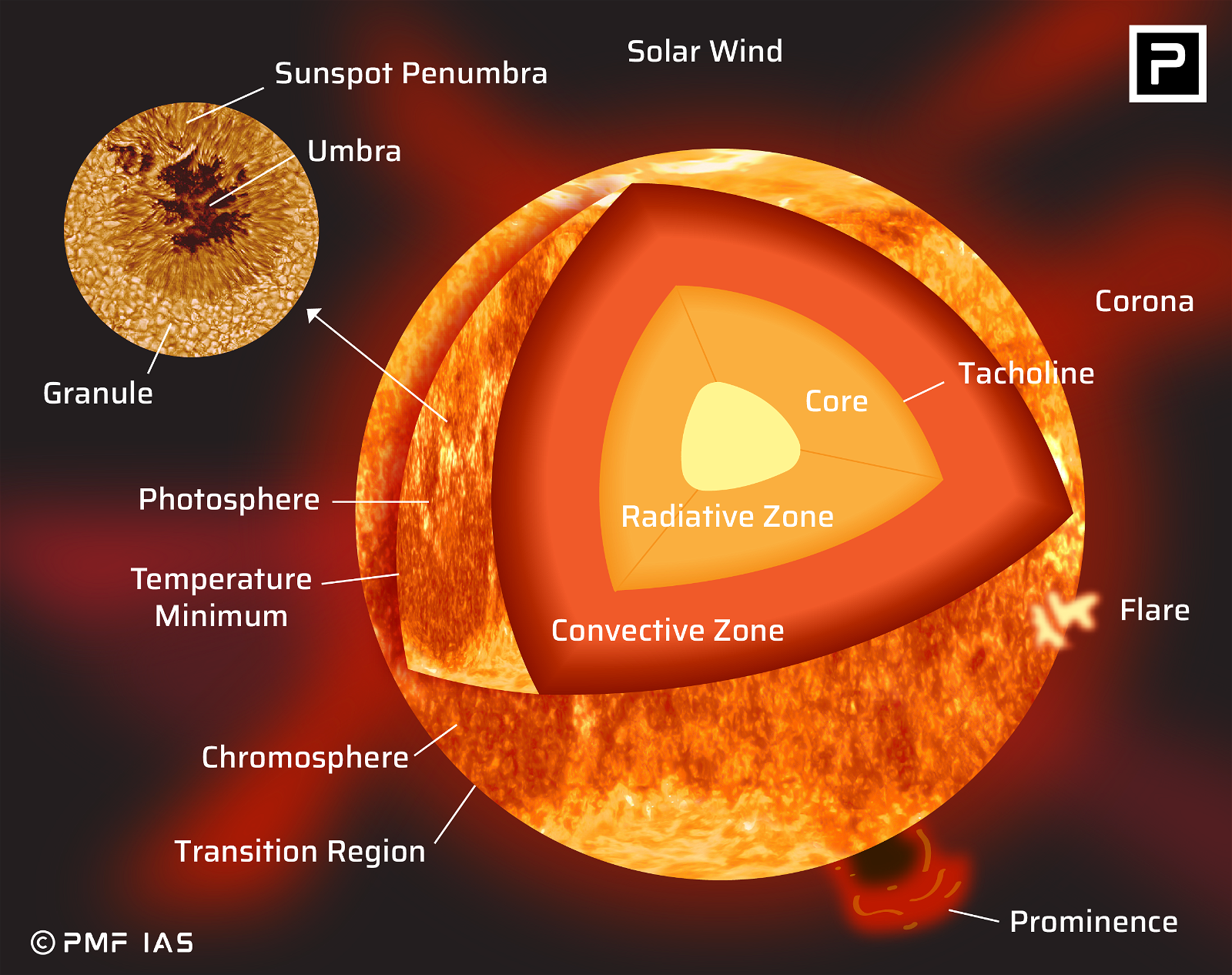
- Age: 4.6 billion years; Diameter: 1.39 million km
- Temperature: 6000 °C on the surface and 16 million °C in the core
- Density: 1.41 times that of water (density of water = 999.97 kg/m³; earth’s overall density is 5.5 times that of water)
- The surface gravity of the Sun is 274 m/s2 (28 times the gravity of the Earth). Comparatively, the surface gravity of the earth and moon are 9.8 m/s2 and 1.62 m/s2 respectively.
- Speed of rotation: 7179.73 km/hrs. Comparatively, earth’s rotational velocity is 1675Km/hrs.
- Period of rotation: 25 days 9 hrs.
- Rotation: counter clockwise (when viewed from a long way above Earth’s north pole).
- Mass: equivalent to 3,32,900 Earth masses.
- Composition: 98% of the sun is hydrogen & helium.
- Most of the solar system’s mass is in the Sun (~99.8%), with most of the remaining mass contained in Jupiter and Saturn. Although the Sun dominates the system by mass, it accounts for only about 2% of the angular momentum due to the differential rotation within the gaseous Sun.
The Sun’s Internal Structure and Atmosphere
- The solar interior, from the inside out, is made up of the core, radiative zone and convective zone. The solar atmosphere above that consists of the photosphere, chromosphere, and the corona (solar wind is an outflow of gas from the corona).
Photosphere
- The photosphere is an extremely uneven bright outer layer of the Sun that emits most of the radiation. The effective temperature on the outer side of the photosphere is 6000°C.
Chromosphere
- Above the photosphere is the chromosphere. It is a thin layer of burning gases. It is a bit cooler — 4,320 ֯C.
Sunspot
- Sunspots are temporary phenomena on the photosphere of the Sun that appear visibly as dark spots compared to surrounding regions. They appear as dark areas because they are about 500-1500 °C cooler than the surrounding chromosphere. They correspond to concentrations of the magnetic field that inhibit convection & result in reduced surface temperature compared to the surrounding photosphere.
- Sunspot activity cycles about every eleven years. The point of highest sunspot activity during this cycle is known as Solar Maximum, and the point of the lowest activity is Solar Minimum.
- The individual sunspot has a lifetime ranging from a few days to a few months. Each spot has a black centre or umbra, and a lighter region or penumbra, surrounding it. It has been suggested that the Sun is 1% cooler when it has no sunspot and that this variation in solar radiation might affect the climates of the Earth.
Solar Wind
- The solar wind is made of plasma (ionised atoms), a stream of energised, charged particles, primarily electrons and protons, flowing outward from the Sun at speeds as high as 900 km/s and at a temperature of 1 million °C.
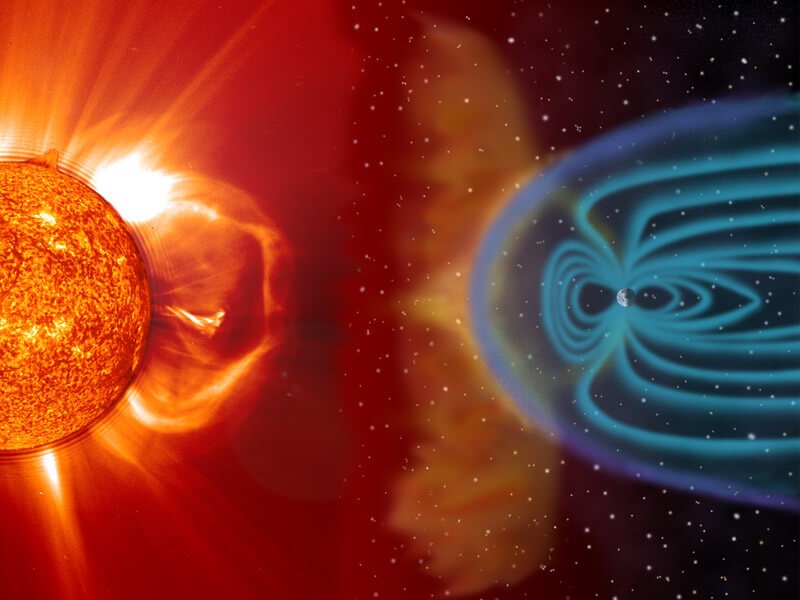
Plasma
Aurora
|
Solar Flares
- Solar are magnetic storms which appear to be very bright spots with a gaseous surface eruption. As solar flares are pushed through the corona, they heat its gas to anywhere from 10 to 20 million °C.
Solar Prominence
- An arc of gas that erupts from the surface of the Sun is called solar prominence. Prominences can loop hundreds of thousands of miles into space. They are held above the Sun’s surface by strong magnetic fields and can last for many months.
Corona
- A corona is a distinctive atmosphere of plasma that surrounds the Sun and other celestial bodies. The Sun’s corona extends millions of kilometres into space and is most easily seen during a total solar eclipse.
Last updated on May 8, 2024 10:06 AM





![PMF IAS Environment for UPSC 2022-23 [paperback] PMF IAS [Nov 30, 2021]…](https://pmfias.b-cdn.net/wp-content/uploads/2024/04/pmfiasenvironmentforupsc2022-23paperbackpmfiasnov302021.jpg)
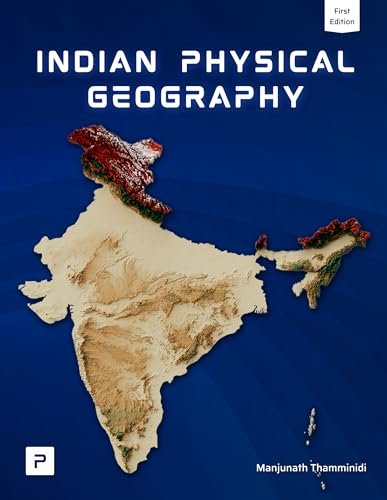

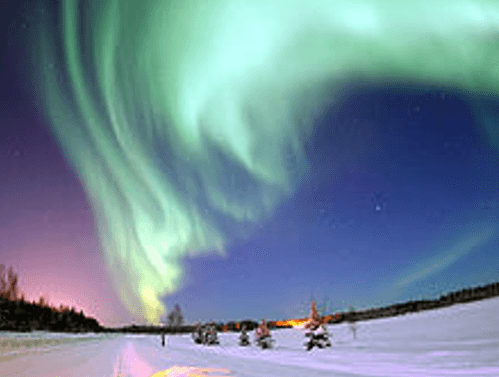

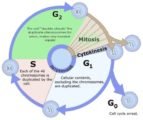




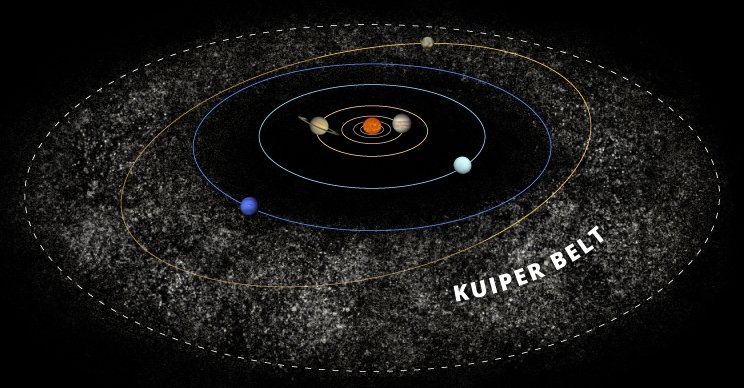
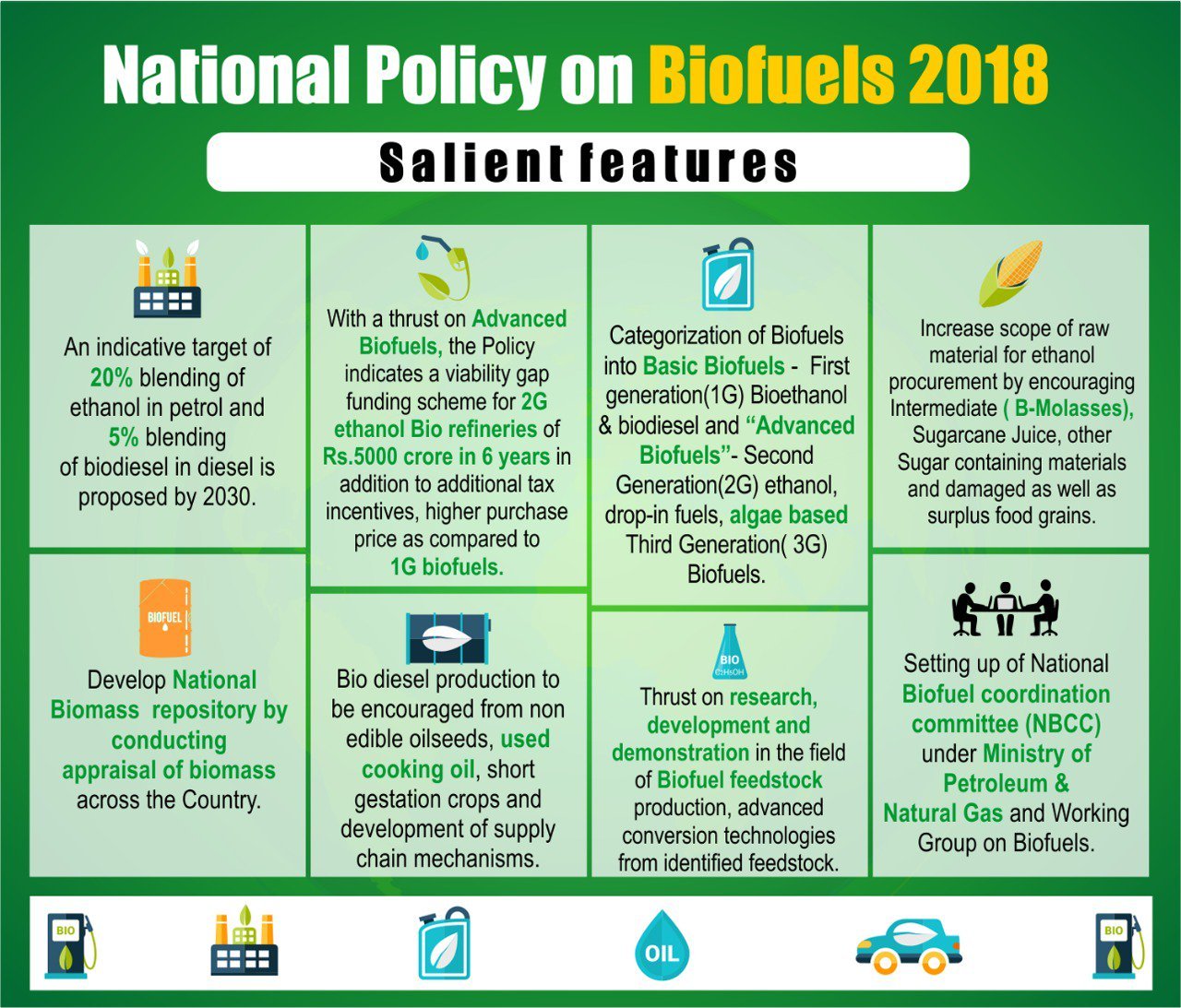




dont sunspots occur in photosphere?